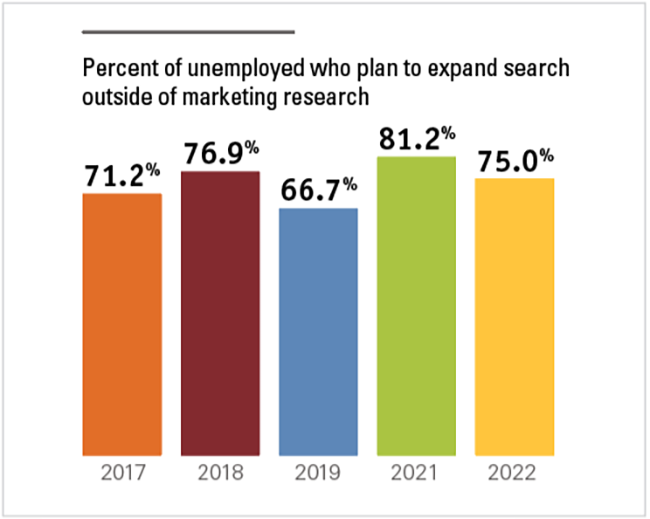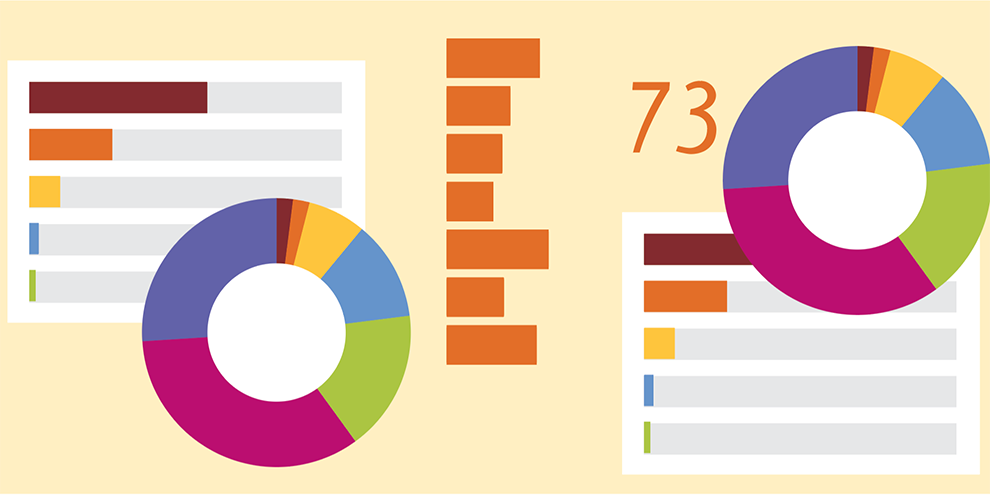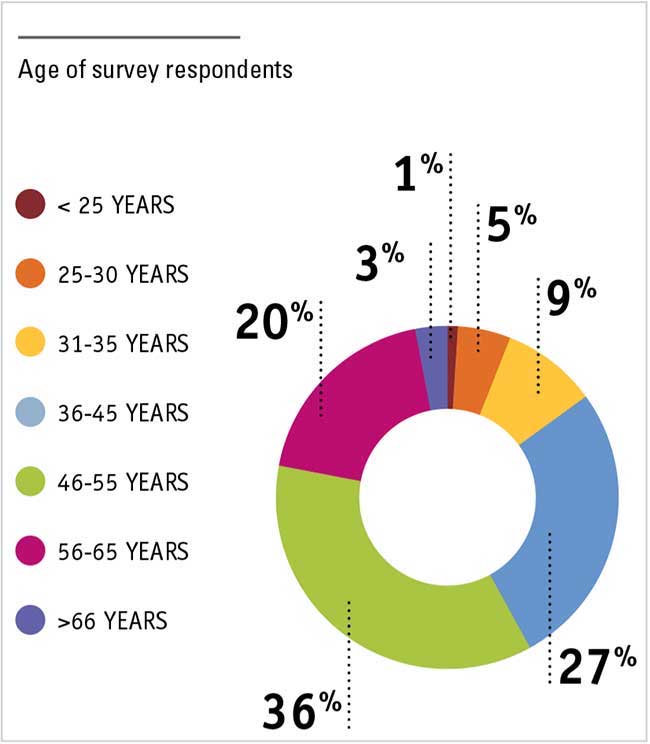An overview of the marketing research industry in 2022
The 2022 edition of Quirk’s annual Q Report offers deeper insight into client-side researchers’ thoughts and opinions. Throughout the years, Quirk’s has collected information to be shared and compared to see how the industry has changed.
This year, respondents continued to prioritize job flexibility. Fifty-eight percent of respondents believe flexibility within an organization is extremely important, followed by 27% who believe it is very important. This is a 10% increase compared to when we first asked the question in 2021.
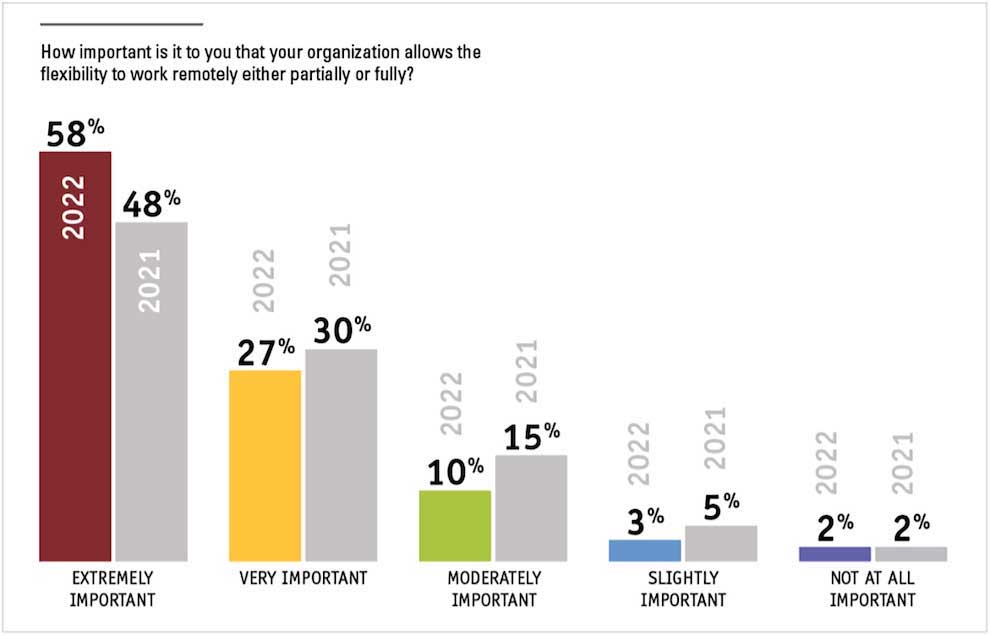
The Q Report received 677 usable qualified responses from full-time (defined as 35+ hours per week) client-side insights professionals. We highlight interesting pieces and comments but mostly let the data speak for itself. If you are interested in a deeper dive, visit www.quirks.com/tools/salary-survey.
Marketing research experience
This year, when asked about marketing research experience, 59% of respondents reported having 16+ years, increasing 16% compared to our 2019 results. Interestingly, although most respondents have 16+ years of experience, 55% indicated having been at their current job between one to five years.
Changes in employment
The continued instability of many industries likely led 46% of respondents to indicate that it is very unlikely and unlikely that their companies will hire additional contract research employees but 49% say their companies are somewhat likely, likely or very likely to hire permanent market researchers in the next 12 months.
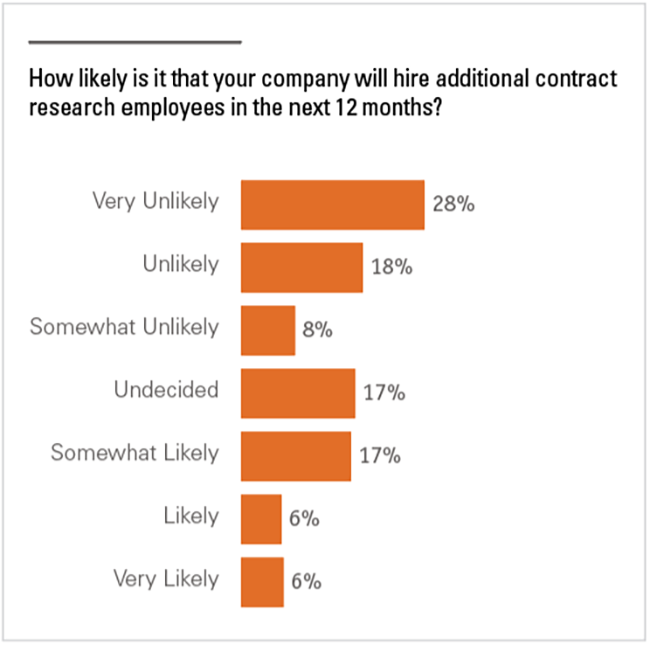
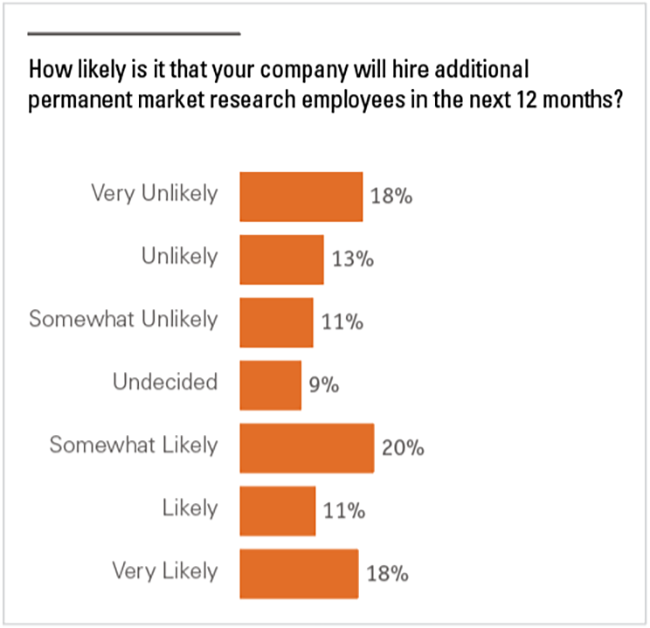
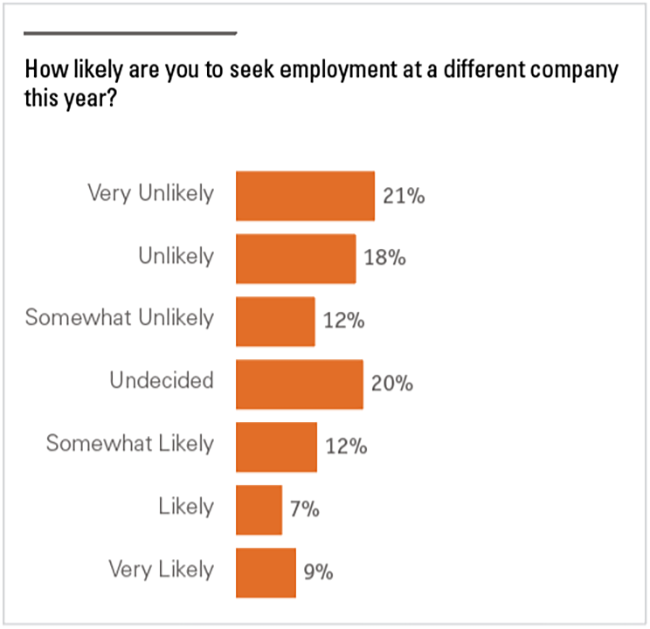
The highest percentage of employees indicated they are very unlikely to change jobs this year or are undecided. Although most respondents are not expecting to seek employment at a different company, they say their companies are searching, and struggling, to hire employees:
We have been trying to hire for the past six months – there is a huge deficit of people with market research skills.
It’s really hard to find quality candidates.
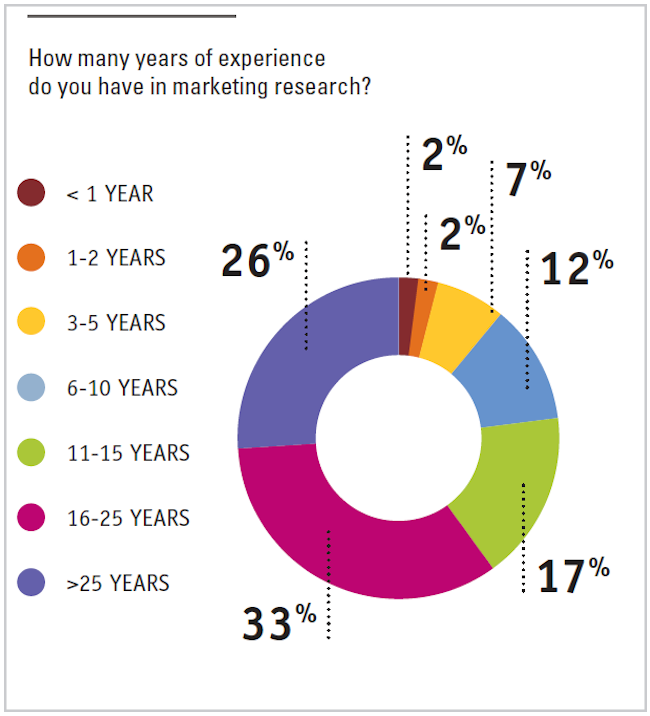
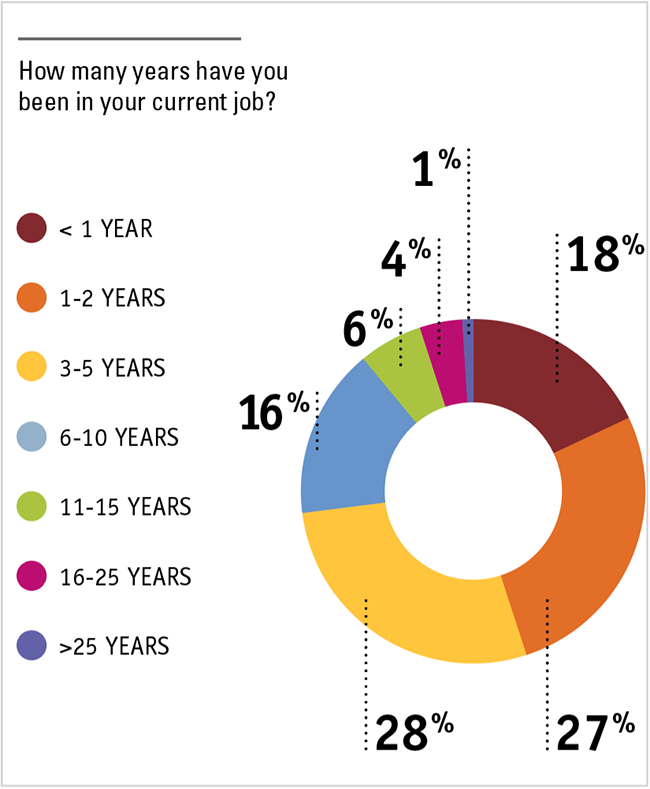
Job satisfaction
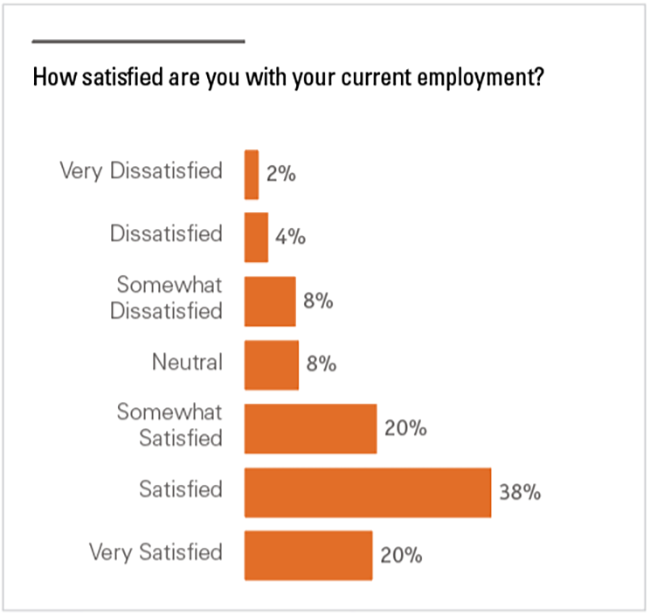 Seventy-eight percent of respondents indicated they are somewhat satisfied, satisfied and very satisfied with their roles however some shared rising concerns within their positions and companies:
Seventy-eight percent of respondents indicated they are somewhat satisfied, satisfied and very satisfied with their roles however some shared rising concerns within their positions and companies:
Historically we are not a research-driven org, so I’d like to see more support here for training and development opportunities, along with additional roles for market researchers.
Being locked into old methods because that is what the company has always done, as well as not having a budget to try new things.
Lack of internal resources. Being a team of one means I’m asked for everything under the sun, with a deadline of ASAP, while my budget is continuously scrutinized.
Lack of understanding by Human Resources about the critical role market research plays for the company which impedes promotions and compensation.
Although most respondents are content with their jobs, many expect the next year to bring challenges:
Marketing research is new to the company. I’m the first-ever dedicated researcher. However, in the first six months of my employment, my role has gone from a focus on market research with a substantial budget to standing up a NPS survey with just enough funding to cover a new survey platform. I’d be surprised if they didn’t cut research from the 2023 budget entirely.
Conducting more qualitative using in-house resources for moderating due to budget cuts.
Positive changes include expanding staff and settling into a new business structure:
Continuing to hire and onboard new team members. Nearly half of the department has been with the firm for less than one year.
We recently reorganized the research dept and increased the research budget, so no big changes are expected for next year.
Executive support for organic growth (vs. acquisitive growth) is growing. As a result, we’re excited to see new product management roles open up that are dedicated to identifying innovative opportunities, and we’re getting some really engaged champions behind marketing research initiatives. As a result, we’re seeing our requests for research increasing overall vs. prior years.
With a fully staffed team, we will produce more output and more research will be utilized across the org.
Compensation
The mean salary of all job titles rose 14% since 2021. In the most-selected title, market research director/senior director, women reported making more than men.
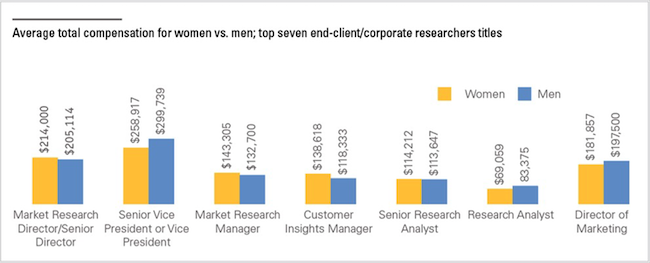 If you are interested in seeing a breakdown of compensation for all industries and job titles, including crosstabs by gender, location, age and more, visit www.quirks.com/tools/salary-survey!
If you are interested in seeing a breakdown of compensation for all industries and job titles, including crosstabs by gender, location, age and more, visit www.quirks.com/tools/salary-survey!
Unemployment in the marketing research industry
Quirk’s has collected unemployment data from 2017-2022, excluding 2020 due to COVID-19. In 2022, 0.36% of respondents were unemployed, the lowest percent to date.
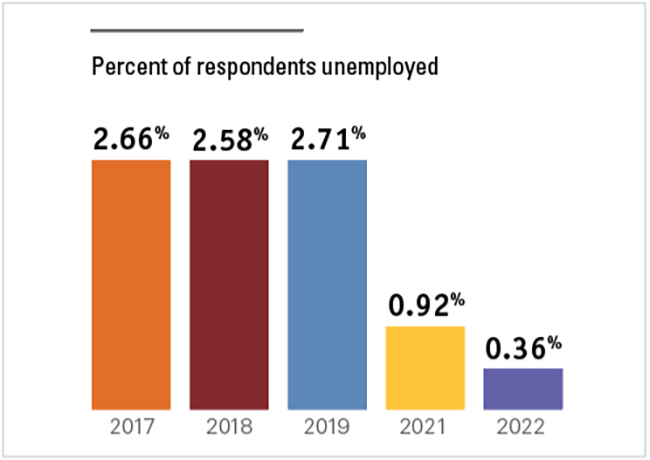 Out of those unemployed, 67% are 56+ years of age, the highest percentage yet.
Out of those unemployed, 67% are 56+ years of age, the highest percentage yet.
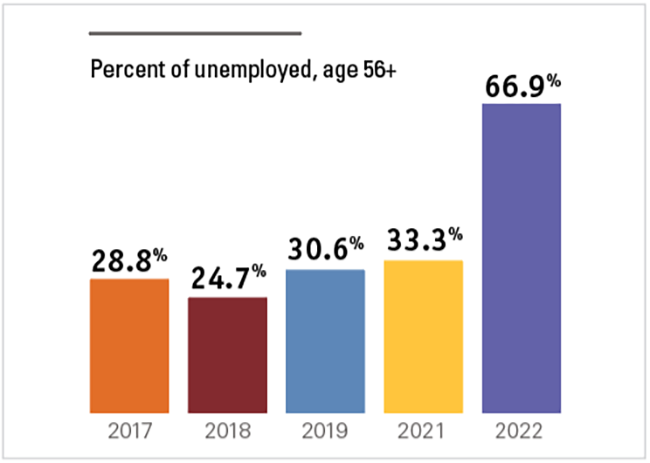
Seventy-five percent of unemployed respondents plan to seek employment outside of the market research industry.
